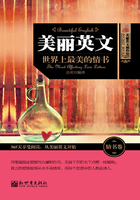"We have learned a good deal about the parts of the flower," said Fred. "Suppose we now follow the flower in its work from the time it is a little growing flower bud till it withers and drops to the ground. Let us begin with it as a bud, before it bursts open. What part of the flower has any work to do at this time?""The calyx, with its strong outer covering of sepals, protects the little bud against the weather," said Willie.
"And I should think," said Norah, "that the soft, velvety petals of the corolla fold round the young stamens and pistil, and make a smooth delicate covering to save them from injury.""Quite right, both of you," said Fred. "That"s just what teacher told us. When the stamens,anthers, and pistil are able to stand the weather, all the flower leaves open, and those inner parts grow quickly. The ovary has its tiny ovules from the first, but the ovules cannot become actual seeds without the pollen from the anthers. The anthers are the first to ripen, and as they ripen they burst open and scatter their yellow pollen. Some of it falls on the stigma of the pistil, and at once forces its way through its spongy substance till it reaches the ovules in the ovary.
"Now listen while I tell you a very wonderful thing about this pollen. You have seen some of the yellow dust. Think how fine the grains of this pollen must be. What a wonderful thing it is then that each little grain of pollen carries down to the ovules a small drop of fluid. It is this very fluid which changes the ovules into actual seeds.""Let me tell Norah about the bees," said Willie, "for after all I think that is more wonderful still.
"You know, Norah, that the bees use the pollen of the flowers to feed their young. They collect it by flying from flower to flower, and carry it home in those hollow baskets in the sides of their thighs. You know, too, that they get honey from the flowers. The honey is always found at the very bottom of the flower. The bees cannot get at itwithout forcing aside the stamens, and most likely bursting some of the anthers. But they get both the things they want, and besides this they get dusted all over with the pollen.
"Now comes the wonderful part. Some flowers have a pistil but no stamens. Such flowers could never produce seeds, for they have no pollen tosend into the ovary. Imagine then the bees going about their own work, withouta thought for the flowers, and yet doing the very thing that is wanted for them. They visit a flower and become covered with its pollen; they go to the next, and, while forcing their way in, leave some of that pollen behind, and the whole work is done."SUMMARY
The sepals and petals protect the stamens and pistil while they are young. The pollen grains from the anthers pass down into the ovary, and carry a small drop of fluid to make the ovules into seeds. The bees, and other insects, do most of the work of carrying pollen from one ?ower to another.
Lesson 53












